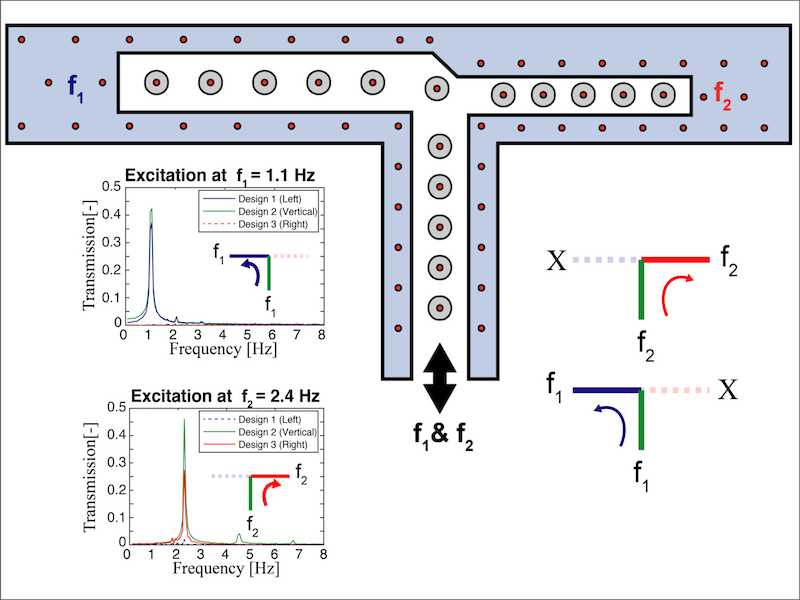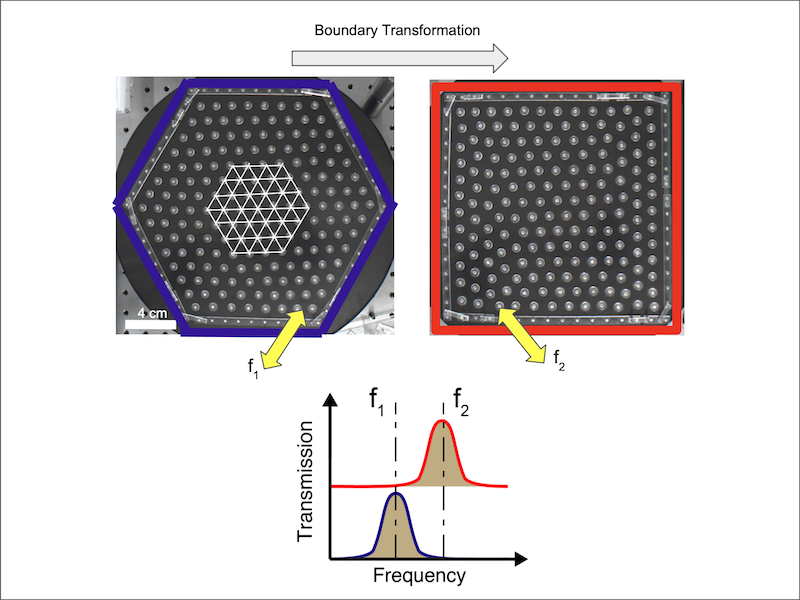
Figure 1

Figure 2

Team 68
Team Members |
Faculty Advisor |
Audrey Watkins |
Dr. Osama Bilal Sponsor Acc Masters |
sponsored by

Metamaterials are manmade materials that have wave propagation properties that are not naturally occurring. A singular unit cell repeated in space is the basic building block of these materials. The geometry of the unit cell determines the dynamical properties of the metamaterial when excited with mechanical waves. The determination of ranges of frequency attenuation versus propagation is of interest. Unit cells with specific shape, size, and stiffness, allow for the tuning of the propagation and attenuation frequency ranges through the metamaterial. Most metamaterials are capable of attenuating waves within the kilohertz range, however, by designing and creating self-assembled unit cells within magnetic potential wells, the infrasound wave range (below twenty Hertz) is attenuated. The objective of this project is to design self-assembled metamaterials capable of controlling infrasound waves in a tunable manner. The strength of the magnetic field and the lattice patterns, created by the self-assembled, uniquely shaped unit cells, both have an influence on the wave frequency ranges that can propagate through the metamaterial. The unit cell lattice patterns can differ by modifying the boundaries of the metamaterial, which affects the interactions between the self-assembled unit cells, therefore changing the properties of the metamaterial. The resulting unique lattice patterns and their wave propagation properties are modeled numerically and tested experimentally. The numerics assume an infinite material model, exploiting the fact that the metamaterial is constructed of identical unit cells repeated in space. In the experimental part of the work, the propagation and attenuation of the mechanical waves is measured as the oscillations of the unit cells as a result of the excited frequency ranges. The comparison of the numerics and experimental data shows that the propagation of ultra-low frequency waves can be controlled through a metamaterial.
